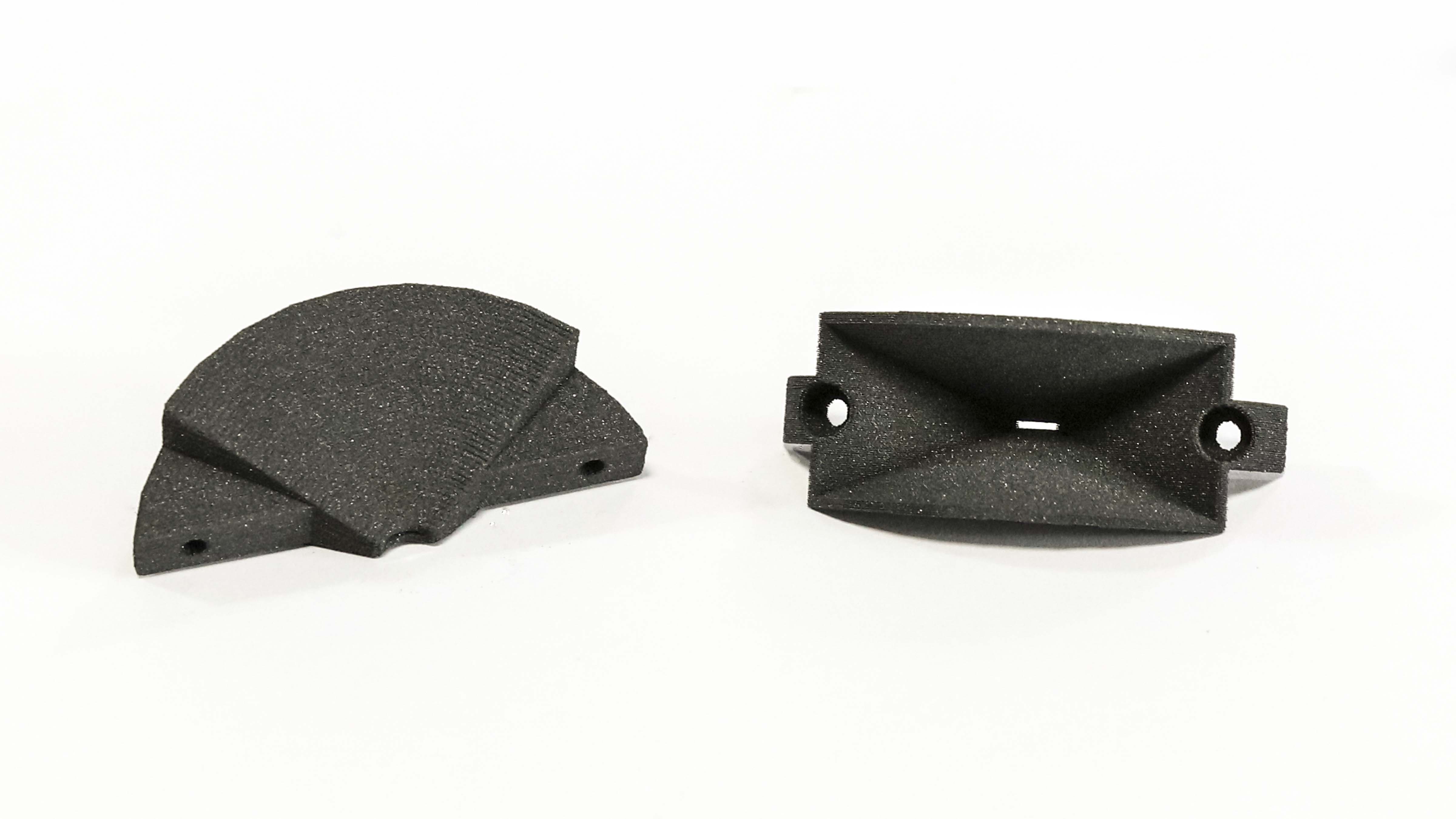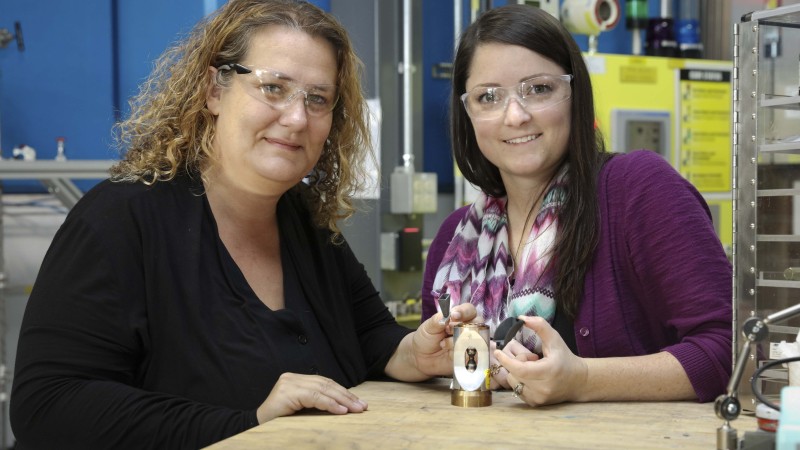Disruptive technologies like 3D printing have made a big impact in manufacturing, in part by lowering costs and expediting production. Now, 3D printing might be making a similar impact on neutron scattering, too.
Researchers and engineers at the Department of Energy’s (DOE’s) Oak Ridge National Laboratory (ORNL) have begun 3D printing neutron collimators—important hardware components in neutron scattering experiments. This innovation can lead to lower costs and expedited production, and the researchers say it can also enable new and improved science.
Using neutron scattering, scientists can probe materials at the atomic level and use the discoveries to develop innovations like faster computers, tougher armor, and more effective drug treatments.
These new 3D printed collimators can help provide clearer data for neutron scattering experiments compared with their predecessors. Some neutron scattering experiments that were previously impossible, like experiments with extremely small samples, can now be achieved thanks to these collimators.
“Before, even if we knew a collimator could be shaped a certain way to make an experiment work, there wasn’t any way to manufacture it,” said Bianca Haberl, who coordinates experiments conducted at high pressures at ORNL’s Neutron Sciences Directorate. “Now if a researcher comes and you realize the experiment doesn’t quite work, you could say ‘let’s design a collimator,’ send it to print, and make the experiment work, or even work a lot better.”
Observing how neutrons scatter off samples can give researchers insight into questions like the internal structure of a sample, like a battery, or the chemical makeup of another sample, like a drug. Collimators work by allowing only neutrons aimed at the sample to pass through (which is called “incident beam collimation”) while also isolating the sample from the surrounding environment (which is called “scattered beam collimation”). As a result, a collimator must be able to effectively absorb neutrons so that it does not “leak.”
“You have your sample, and you use these incident beam collimators to make sure you only look at the sample,” said Haberl. “They make sure you only see the parts you want to see rather than the big lumps of metal around it that you don’t care about.”
A typical collimator manufacturing process involves taking plates of boron carbide (B4C), cutting them, and reaction bonding them together. This process can take months and cost up to or around $2,000.

Small, 3D printed neutron collimators, designed by ORNL’s Jamie Molaison.
Collimators are used to guide neutrons to samples so the neutrons can analyze
the samples at the atomic level. 3D printed collimators provide reduced costs
and manufacturing times, and in some cases can enable new types of experiments.
(Image credit: ORNL/Genevieve Martin)
Now that they can be 3D printed, the same collimators can be manufactured in a day for about $30.
These collimators are printed using a process called binder-jetting, which works similarly to an inkjet printer. The 3D printer lays out a layer of the same boron carbide material in powder form and then passes over it, placing a binding material, or glue, in the shape of a layer of the part. The printer then lays out more powder on top of the glue and repeats this process until the part is completed.
“Just like you would print ink on a piece of paper, we print glue into this layer of powdered material,” said Amy Elliott, the principal investigator for binder-jet printing at DOE’s Manufacturing Demonstration Facility at ORNL. “The technology allows us to work with boron carbide and many other ceramics, which are difficult to fuse with other additive manufacturing methods.”
This process can allow for much finer detail in collimator designs, meaning that researchers have the capability to reduce leaks and shape a collimator in unique ways. Using 3D printing, researchers now also have the capability to make collimators using enriched boron carbide (10B4C), which absorbs neutrons better than the typical printing material.
Because this enriched boron carbide has a higher density of neutron-absorbent 10B, it can provide clearer data to researchers. Boron carbide materials are good at neutron absorption in a wide range of experiments, which is why researchers chose to focus on using these materials in this initial research. In the future, the researchers also plan to look at using 3D printing to create collimators out of other neutron-absorbing materials.
The 3D printed collimators could lead to a change in the way collimators are used. Currently, a single collimator is used for a single neutron scattering instrument. Now that collimators can be created quickly and inexpensively, they can be changed and used in different experiments, similar to the use of different sample environments for different experiments. Having collimators that can be tailored to their experiments can allow scientists to collect more accurate data for their research.
To make this possible, researchers are working with the Compute and Data Environment for Science, one of ORNL’s in-house computing resources, to develop computer simulations that can automatically design the best collimator for an experiment. This enables not only faster manufacturing but also faster design.
“Before, you’d have one collimator for your one instrument,” said Elliott. “Now with 3D printing, since the cost is so low and the turnaround is so small, you could have one collimator per experiment.”
This work was supported in part by ORNL’s Laboratory Directed Research and Development Program.
The Manufacturing Demonstration Facility at ORNL is supported by DOE's Office of Energy Efficiency and Renewable Energy, Advanced Manufacturing Office (AMO). AMO supports early-stage research to advance innovation in U.S. manufacturing and promote American economic growth and energy security.
ORNL is managed by UT-Battelle for the DOE Office of Science, the single largest supporter of basic research in the physical sciences in the United States. DOE’s Office of Science is working to address some of the most pressing challenges of our time. For more information, please visit http://science.energy.gov.—by Josh Witt







